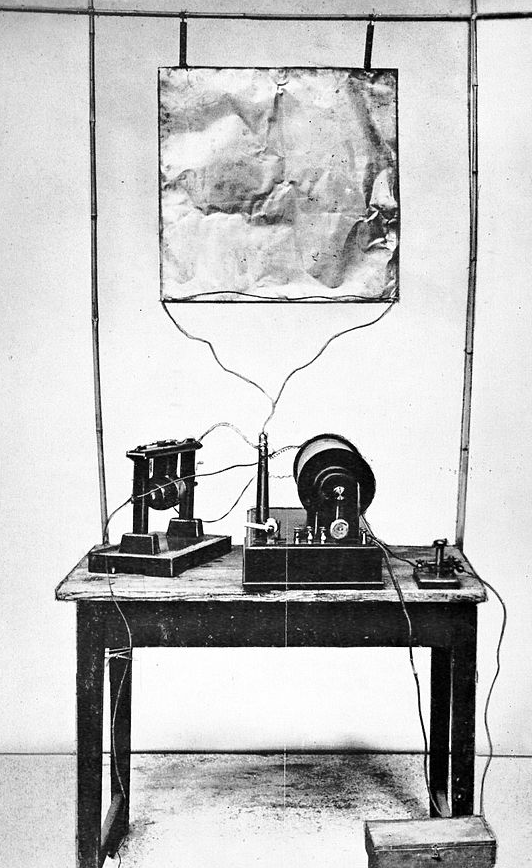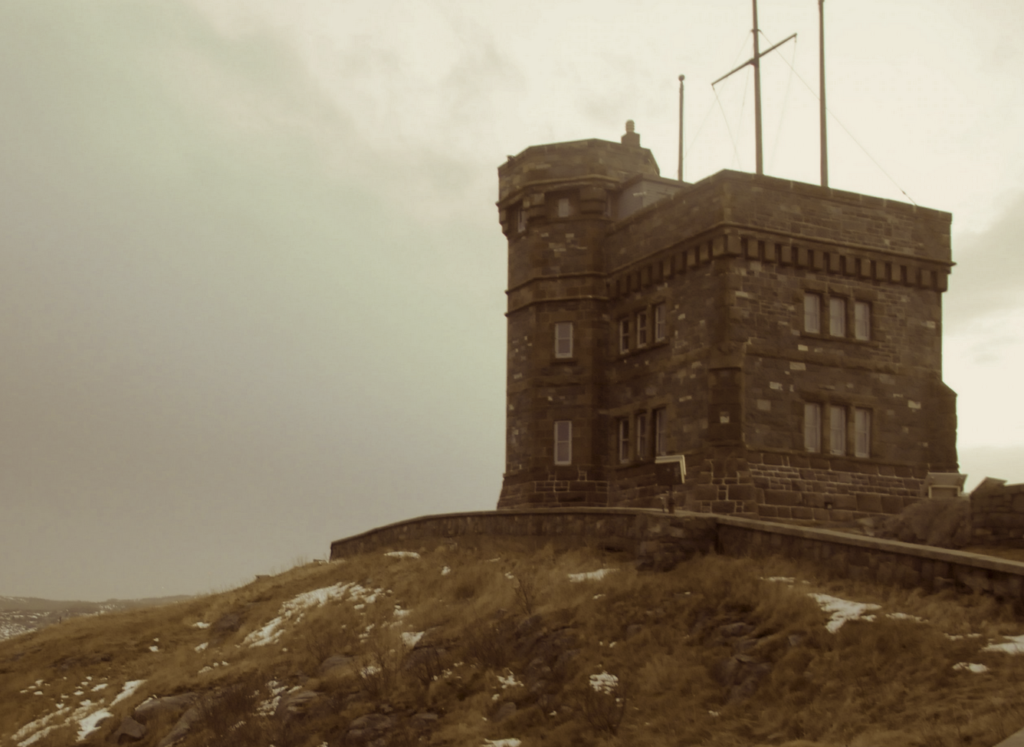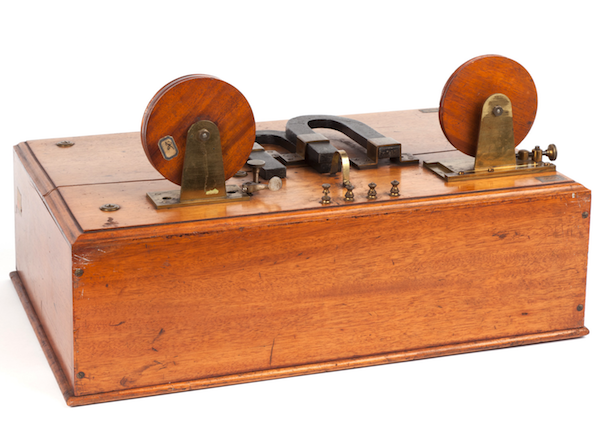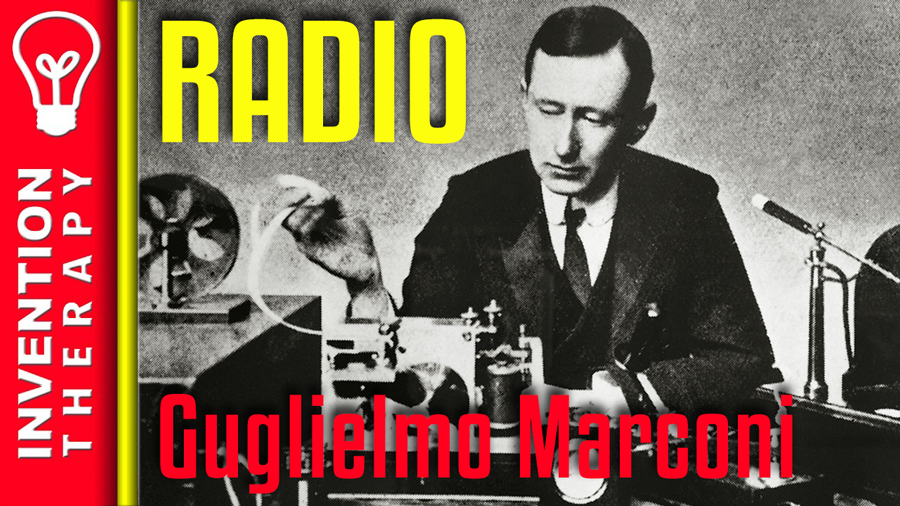Guglielmo Marconi was born on the 25th of April, 1874, in Bologna, Italy. Marconi was one of the most important innovators that changed the way the world communicates. His invention of the radio was a groundbreaking invention that had significant implications on just about every aspect of human life. Radio transmissions enabled humankind to communicate around the globe without wires. The radio was seen as an advancement of the telegraphic technology and was the basis for this wireless improvement. Marconi’s discovery is the foundation for radio and television broadcasts. It is also the technology that paved the way for wifi and the smartphones we use today.

Guglielmo Marconi Facts
- Marconi was born into a noble family.
- Guglielmo received no official education
- Marconi became fascinated with Heinrich Hertz at an early age.
- Augusto Righi tutored the Italian inventor.
- Guglielmo conducted many experiments at home.
- Marconi built the first functional transmitter in 1895.
- The radio consisted of the transmitter, coherer, and the antennas.
- Marconi unsuccessfully pitched the radio to the Italian government.
- He then presented his idea to the British government.
- Marconi impressed the British with his new wireless invention.
- The first overseas transmission took place in 1897.
- That same year in 1897, Guglielmo Marconi became world-famous.
- Marconi’s Radio was the first to transmit over the English Channel.
- America fell in love with the radio.
- Marconi received his radio patent in 1900.
- Guglielmo was the first to transmit over the Atlantic ocean.
- Marconi also invented the Magnetic Detector.
- Marconi continued to invent for the remainder of his life.
- Guglielmo Marconi won the Nobel prize in 1909
- He became the president of the Royal Academy of Italy
- Marconi was married twice.
- Marconi Died July 20th, 1937 at the age of 63.
Guglielmo Marconi was an Italian electrical engineer who spent his whole life researching radio waves. He developed the first system that enabled humans to communicate over long distances, without wires and very little delay. Marconi received international recognition for his work and earned many awards during his lifetime. The Nobel prize in 1908 is arguably the most impressive of all.
In this article, we will answer the following questions:
- What was Marconi’s education?
- How did Marconi come to the invention of the radio?
- What did he have to do to invent the radio?
1. Marconi Was Born Into a Noble Family
Guglielmo Marconi’s father, Giuseppe Marconi, was an Italian landowner from Bologna. He was a nobleman and aristocrat who possessed a considerable amount of wealth. Guglielmo was the second son of the family. Giuseppe was married to Annie Jameson, who was Irish. The fact that Guglielmo was born into a wealthy family enabled him to conduct experiments at his father’s estate and buy equipment to experiment. Guglielmo spent a lot of his childhood with his mother in Bedford, England, where he learned how to speak English. This knowledge would help Marconi succeed later in his life.
2. Guglielmo Received No Official Education
Having no formal education was not uncommon at the time, especially for children that stemmed from noble families. Most of them received a better education at home, and it was the same for Guglielmo Marconi. His father made sure that he received extensive private, professional tutoring. In his childhood, Guglielmo learned chemistry, math, and physics. It was his physics teacher, Vincenzo Rosa, that had the most significant influence on Marconi. Rosa inspired Marconi to take an interest in the subject of radio waves.
3. Marconi Became Fascinated With Heinrich Hertz
Heinrich Hertz and his work was a significant influence on Marconi. Guglielmo became interested in Hertz’s discoveries very early in his life. When he was 17, Marconi started researching the idea of wireless telegraphy. The mathematical works of Maxwell and Lodge’s research on lightning and electricity. The Italian also studied the findings of Maxwell and Lodge regarding their conclusions about lightning and static electricity.
4. Augusto Righi tutored the Italian Inventor
In the early 1890s, Guglielmo got acquainted with Augusto Righi. He was a renowned professor at the local Bologna University. Righi was known for his work and research on Hertz’s theories and especially for his work on microwaves. Marconi learned a lot from Righi and was allowed to attend his lectures at the university. Righi’s methods and teachings were a significant influence on Marconi. He was even allowed to use the lab of the university for his experiments. The tutoring from Righi not only increased his knowledge about Hertz but also helped him to improve his methods.
5. Guglielmo Conducted Experiments at Home
His interest soon escalated, and he started doing experiments at his father’s home. He was enabled to do so because his father financed the equipment required. With the knowledge he gained from Righi and Hertz, Marconi was well-equipped to start working on experiments and developing his invention. His butler, who helped him move the equipment, procured him with the needed materials and supported him. He experimented with the Hertz waves, or the radio waves as they were known as later.
His family supported Marconi during the experiments, and he built many signal transmitters during his tests that operated wirelessly over a short distance. These experiments would be the start of Marconi’s success, as he looked to build a device that was able to transmit the signal over longer distances.

6. Marconi Built The First Functional Transmitter in 1895
After years of experimenting and learning about the radio waves, Marconi was ready to improve his transmitters. He wanted the devices to be able to transmit signals wirelessly over long distances. His first transmitter was able to transmit signals over the range of a mile and a half. In 1895, he looked for ways of improving the strength of the signals.
He found that making some minor adjustments can significantly increase the range of the transmitter. He raised the antenna and grounded the transmitter and receiver. Marconi wanted to concentrate the signal into one spot rather than the signal beam being spread out. It made the device capable of receiving and emitting signals to up to two miles in range. Marconi’s experiments were successful, and this meant that his invention needed more funding.
7. The Radio Consisted of the Transmitter, Coherer, and the Antennas
The first radio that was built by Marconi was much more primitive than the one that he demonstrated to the British government later in his life. It used a monopole antenna with an elevated copper sheet. This sheet connected directly to the Righi spark gap. That design also incorporated the telegraph key for the sending of Morse code.
A later Marconi Radio System was much more complicated. The updated system featured three different devices.
- Transmitter
- Antennas (one for the transmitter and one for a receiver)
- Coherer (receiver)
8. Marconi Unsuccessfully pitched the Radio to the Italian Government
Encouraged by his experiments and findings with his radio transmitter, Marconi approached the Italian Ministry of Post in 1895. He presented the Ministry with his invention and asked for funding to continue to improve the device. Unfortunately, given the politics of the day, the Ministry of Post ignored his requests. Marconi never received an official answer and was even deemed insane by the Italian government.

9. He Then Presented His Idea to the British Government
Marconi was not to be distracted by the rejection from his home country of Italy. He knew that he was onto something, so he remained confident regarding his invention. He wanted to get more funding to improve the distance and to buy better parts for his radio. Through some business contacts and acquaintances, Marconi was able to present his idea to the British government. His initial presentation was successful, and he managed to convince the British to help him.
10. Marconi Impressed the British With His New Wireless Invention
His first demonstration of the technology came in 1896. At first, there were some simple demonstrations over shorter distances. These tests proved his transmitter to be highly efficient. After some minor improvements, the radio was ready to send signals over longer distances.
The first major test came with the transmission over a large field where the radio transmitted morse code over 3.7 miles. The British then requested further improvements.
11. The First Overseas Transmission Took Place in 1897
The radio attracted the interest of the British Post Office. William Preece, the Chief Electrical Engineer at the Post Office, was particularly interested in the invention. He encouraged Marconi to keep improving the design. Preece presented it to the general public at the end of 1896 through lectures and publications.
In 1897, Marconi and Preece managed to establish the first wireless signal transmission overseas. This test was done over the Bristol channel from the Flat Holm Island to Lavernock Point, which is a distance of about 3.7 miles. Later that year, the radio was able to transmit a signal over 10 miles.
12. Marconi Becomes World Famous in 1897
After those achievements and many public presentations, Guglielmo Marconi receives international recognition. He was traveled back to Italy to conduct some experiments with the Italian authorities. Marconi was more interested in continuing to cooperate with Britan, so he stayed there briefly. He had hard feelings towards Italians because they paid him little attention when they had the chance. Besides, their research equipment was obsolete.
13. Marconi’s Radio Was The First To Transmit Over the English Channel
With the help of experiments and tests, the radio transmitter was ready to transmit signals over longer distances. It was becoming more and more feasible for communicating overseas wirelessly, and preparations began for transmissions over the English channel. The first transmission came in 1899 when the radio transmitted radio waves from Wimereux, France, to South Foreland Lighthouse, England. This transmission was a major accomplishment for Marconi and his radio.
14. America Fell In Love With the Radio
Soon, the word had spread about Marconi’s fantastic achievement, and it generated a lot of interest among the public. The New York Herald newspaper wanted Marconi to cover the yacht races in New Jersey with his new technology. The news broadcasted from a ship. This event was a demonstration to the Americans of what the radio could do. It was not long after that radio became a new way to spread the news.
15. Marconi Received His Radio Patent in 1900
At this point, the radio transmitter was already well-known to the general public as well as the engineering world. Marconi decided to take out the patent for the radio in 1900. The number of the license was 7777. Marconi also established his company, named Marconi’s Wireless Telegraph Company Limited.

16. Guglielmo Was The First to Transmit Over the Atlantic Ocean
Guglielmo Marconi knew that his device could be improved so that it was able to cover greater distances. He was determined to make radio transmission feasible overseas. Many people doubted the magnetic waves’ ability to travel that far due to the Earth’s curvature. We now know that Marconi turned about to be correct in his assumptions.
At the time, telegraphic cables transmitted signals over the Atlantic via the telegraph. Marconi thought that it could occur wirelessly. To achieve this goal, the whole design needed to be improved. For starters, Marconi had to build a power station in Cornwall to transmit his radio waves. He built an antenna with a height of 150 meters. He did the same on the other side of the ocean, at a power station in Newfoundland. The transmission was successful. It was the first transatlantic transmission of radio waves.

17. Marconi also Invented the Magnetic Detector
He built the magnetic detector was one of the first radio receivers that he used as a part of the transmission setup. It was the standard receiver for many years to come. It improved signal strength and enhanced reception quality.
18. Marconi Continued To Invent For the Remainder of His Life
He continued developing his radio transmitting stations. Marconi wanted to build more powerful stations to establish a stable and reliable transatlantic connection. In 1905, he invented the first horizontal directional aerial. In 1912, his radio transmission equipment helped save the survivors of the Titanic. His technology proved vital during World War 1. Marconi was appointed as a captain and then commander of the navy.
19. Marconi Won The Nobel Prize in 1909
In 1909, Marconi’s work with radio waves won him the Nobel Prize in Physics. He shared this award with Karl Braun. It was a recognition for his life work.
20. He became the President of the Royal Academy of Italy
In 1930, Guglielmo was appointed by Mussolini as the president of the Royal Academy of Italy. It was a newly-established academy of professors and scientists by the fascist regime. Nevertheless, it was another recognition of Marconi’s life achievements.
21. Marconi Was Married Twice
Marconi married twice in his life. The first time, he married Beatrice O’Brien in 1905. Together, they had three daughters and a son. The couple divorced in 1924. In 1927, he married Maria Cristina Bezzi-Scali. They had one daughter.

22. Marconi Died in 1937 at the age of 63
On the 20th of July, 1937, Marconi died at the age of 63 due to a series of heart attacks. We remember him as one of the most famous and important inventors of the twentieth century.
What we can learn
As inspiring inventors, we can all learn a few things from Marconi’s life. Even when the country of his birth laughed at him, he still persisted in his journey to create the radio. What seemed to be a crazy idea in Italy turned out to be a welcomed new technology around the globe.
We all need to push forward and never give up on our invention ideas. Just like Marconi’s first long-distance transmission, you could find yourself riding a wave of success.

Are you ready to become an inventor?
Getting your idea out of your head and into your hands is only the first in a long set of steps towards becoming a successful inventor.

First Steps To A Successful Invention
At Invention Therapy, we believe that the power of the internet makes it easier than you think to turn your invention idea into a reality. In most cases, you can build a prototype and start manufacturing a product on your own. Changing your way of thinking can be difficult. Being an inventor requires you to balance your passion with the reality of having to sell your products for a profit. After all, if we can't make a profit, we won't be able to keep the lights on and continue to invent more amazing things!Please subscribe to our Youtube Channel!




